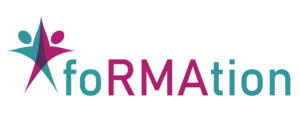Lesson 1: Project Lifecycle & RMAs as Professionals in the Project lifecycle
See the introductory video
Complete the exercise
- The student knows how to identify the activities in the light of the project objectives, outputs, main tasks, performance criteria and resource requirements set in the proposal.
- The student will identify the RMA professional roles involved directly and indirectly in post award project management.
Lesson 2: Project Management Structure (PMS), Grant Agreement (GA) and Consortium Agreement (CA)
- The student will map the main internal and external actors’ involvement across the project management stages and devise a strategy for their timely contribution for the implementation of the project (i.e. Stakeholder Management).
- The student can follow the development of several simultaneous management tasks (e.g. team management, cost management) and prioritize the most relevant ones at different stages of project management.
Lesson 3 and 4: Project management integration, Monitoring and Control
See the introductory video
Complete the exercise
- The student has a basic insight into some main time and project management tools and methodologies.
- The student will be able to identify and measure the resources needed for project implementation (team and their time allocation, the physical and infrastructural resources needed, plus other needs) and to integrate this information with a budget and a calendar plan (i.e. Project Management Plan).
- The student will apply methodologies and tools for effective project management, including time, people and tasks management, as well as reporting.
- The student will be able to contribute to the identification and prioritization of the management, financial and legal issues to be addressed at different stages of the project life cycle (i.e. Project Integration Management).
Lesson 5: Quality and Risk Management
- The student has a basic insight in negotiation theories and conflict management models, as well as practice of dispute resolution.
- The student is aware of the concept and methodology of risk management.
- The student can effectively define and articulate, brainstorm and select the most adequate management solutions and evaluate its effects in achieving the project’s’ goals.
Lesson 6: Team Management
See the introductory video
Complete the exercise
- The student has a basic insight into the theories discussing the features and dynamics of team roles, procession and decision making
- The student will get familiar with the most important leadership models.
- The student can select and apply the most adequate leadership model according to the given circumstances.
Lesson 7: Oral presentations
- The student knows how to identify the activities in the light of the project objectives, outputs, main tasks, performance criteria and resource requirements set in the proposal.
- The student will map the main internal and external actors’ involvement across the project management stages and devise a strategy for their timely contribution for the implementation of the project (i.e. Stakeholder Management).
- The student will be able to identify and measure the resources needed for project implementation (team and their time allocation, the physical and infrastructural resources needed, plus other needs) and to integrate this information with a budget and a calendar plan (i.e. Project Management Plan).
- The student will apply methodologies and tools for effective project management, including time, people and tasks management, as well as reporting.
- The student will be able to contribute to the identification and prioritization of the management, financial and legal issues to be addressed at different stages of the project life cycle (i.e. Project Integration Management).
- The student can follow the development of several simultaneous management tasks (e.g. team management, cost management) and prioritize the most relevant ones at different stages of project management.

